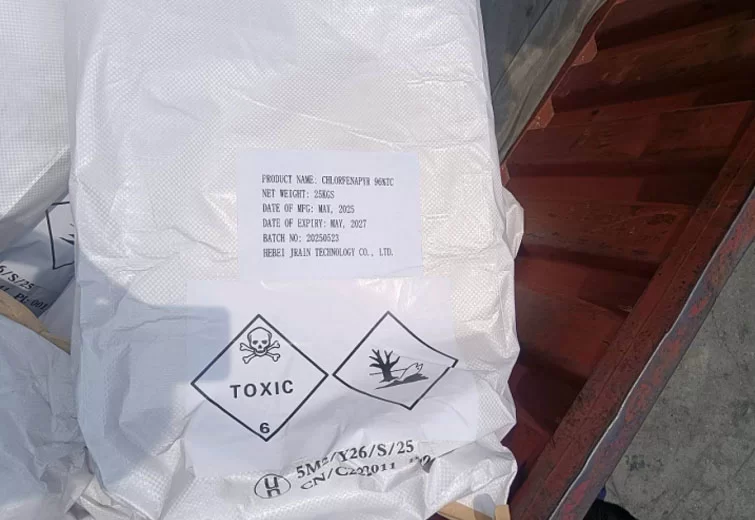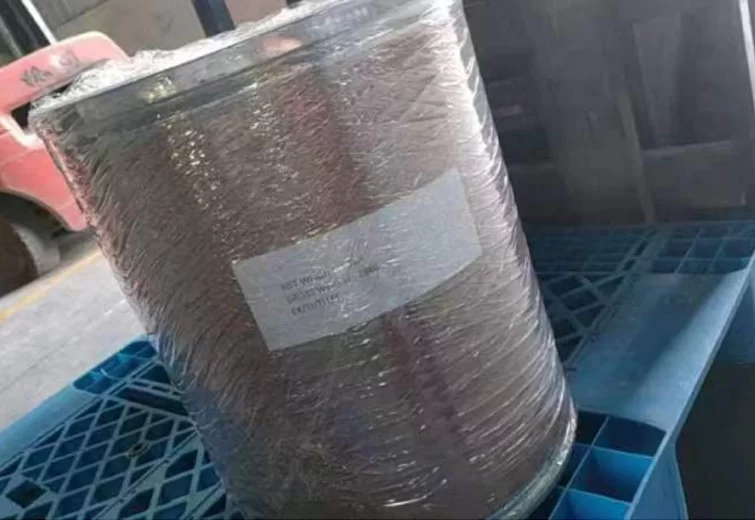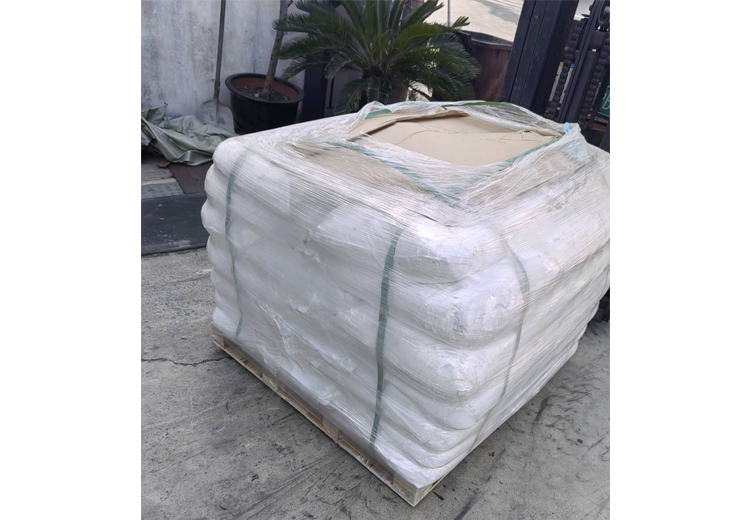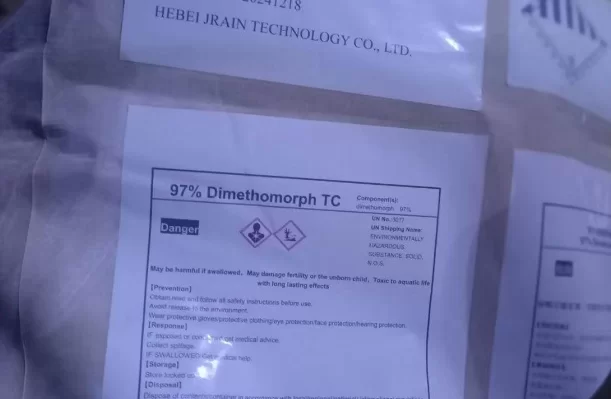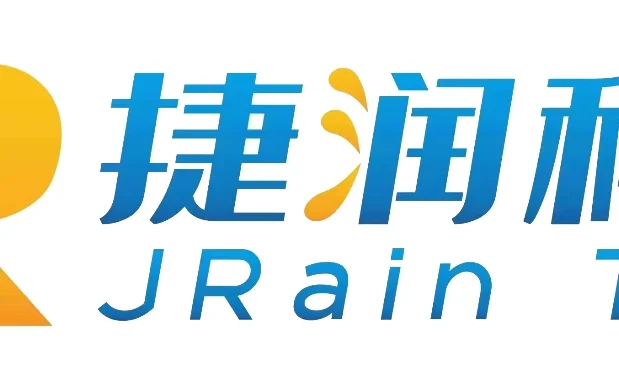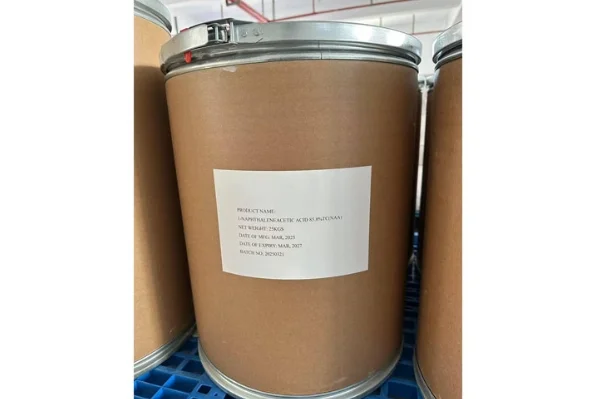Unlocking Crop Potential: The Efficacy of Trifloxystrobin Fungicide in Modern Agriculture
In the relentless pursuit of agricultural productivity and food security, advanced crop protection solutions are paramount. Among these, trifloxystrobin fungicide stands out as a highly effective broad-spectrum strobilurin fungicide. This active ingredient is a cornerstone in integrated pest management strategies, offering robust protection against a wide array of fungal diseases that threaten staple crops worldwide. Its unique mode of action and versatility make it an indispensable tool for growers aiming to optimize yield and quality. The demand for sophisticated `trifloxystrobin products` continues to grow, driven by evolving environmental challenges, rising disease resistance, and the imperative for sustainable farming practices. This comprehensive overview delves into the technical facets, application benefits, and market significance of Trifloxystrobin, providing B2B stakeholders with critical insights into its role in modern crop protection.
The agricultural sector is currently navigating significant trends, including the increasing globalization of food supply chains, stricter regulatory landscapes for agrochemicals, and a heightened focus on residue management. In this dynamic environment, `trifloxystrobin products` offer an advantageous profile, balancing high efficacy with favorable environmental and toxicological characteristics when applied correctly. Farmers and agronomists seek solutions that provide consistent performance across diverse climatic conditions and cropping systems. Understanding the intricate details of `trifloxystrobin fungicide`, from its molecular structure to its field-level performance, is crucial for selecting the right crop protection strategy and ensuring sustainable agricultural output. This guide aims to equip technical personnel and decision-makers with the knowledge to leverage Trifloxystrobin effectively.
Technical Parameters and Mode of Action
Trifloxystrobin, chemically designated as methyl (E)-methoxyimino-{(E)-α-[1-(α,α,α-trifluoro-m-tolyl)ethylideneaminooxy]-o-tolyl}acetate, belongs to the strobilurin class of fungicides, also known as QoI (Quinone outside Inhibitor) fungicides. Its primary mode of action involves disrupting the fungal respiratory chain at the cytochrome bc1 complex (complex III), specifically binding to the Qo site. This interference inhibits ATP production, effectively halting fungal growth and spore germination. This potent fungicidal activity makes `trifloxystrobin fungicide` highly effective against a broad spectrum of pathogens.
Key technical characteristics of Trifloxystrobin include its unique mesostemic activity. This means it exhibits strong affinity for plant surfaces, forming a protective layer, and also possesses translaminar movement, moving from the upper to the lower leaf surface. This combination provides excellent preventative and curative action against invading fungi. Its vapor phase activity further contributes to redistribution on the leaf surface, enhancing coverage and protection. When considering `trifloxystrobin products`, understanding these intricate mechanisms is vital for optimizing application timings and rates to maximize disease control and minimize potential resistance development. Below is a table detailing common parameters associated with commercial `trifloxystrobin products`.
Key Parameters of Trifloxystrobin Fungicide (Technical Grade)
Parameter | Value/Description |
Chemical Formula | C20H19F3NO4 |
Molecular Weight | 409.37 g/mol |
CAS Registry Number | 141517-21-7 |
Purity (Technical Grade) | ≥ 95.0% |
Appearance | White to light beige crystalline powder |
Solubility in Water | Approx. 0.61 mg/L (at 20°C) |
Vapor Pressure | 2.0 × 10-5 mPa (at 20°C) |
Melting Point | 75-78°C |
Trade Names (Examples) | Flint®, Stratego® (with propiconazole), Quadris Top® (with azoxystrobin), Twist® (specific formulations) |
Manufacturing Process of Trifloxystrobin Fungicide
The production of high-quality `trifloxystrobin products` involves a sophisticated multi-step chemical synthesis and formulation process, adhering to stringent quality control standards. The journey begins with carefully selected raw materials, primarily benzene derivatives and methoxyacrylates, which undergo a series of precise chemical reactions.
1. Raw Material Sourcing & Pre-treatment: High-purity precursors are sourced and verified for quality. Any impurities that could affect the final product's efficacy or stability are meticulously removed.
2. Multi-step Organic Synthesis: The synthesis of Trifloxystrobin involves several complex reaction stages, often including Heck reactions, Suzuki coupling, esterification, and etherification. Each step requires precise control of temperature, pressure, reaction time, and catalyst concentration to ensure maximum yield and purity. Intermediate products are sampled and analyzed at each stage.
3. Purification: Following synthesis, the crude Trifloxystrobin technical grade undergoes rigorous purification processes. Techniques such as distillation, crystallization, filtration, and chromatography are employed to remove unreacted starting materials, by-products, and other impurities, achieving the required purity level (typically ≥95%).
4. Quality Control (Technical Grade): The purified technical grade Trifloxystrobin is subjected to comprehensive analytical testing using advanced instruments like High-Performance Liquid Chromatography (HPLC) and Gas Chromatography-Mass Spectrometry (GC-MS) to confirm purity, identify impurity profiles, and verify the chemical structure via Nuclear Magnetic Resonance (NMR). This ensures compliance with international standards like ISO and GLP (Good Laboratory Practice).
5. Formulation: The technical grade is then formulated into commercial `trifloxystrobin products` such as Suspension Concentrates (SC), Water Dispersible Granules (WG), or Emulsifiable Concentrates (EC). This involves blending with inert carriers, surfactants, dispersants, anti-foaming agents, and solvents to optimize stability, ease of application, and biological efficacy. Granulation or milling processes are carefully controlled to achieve optimal particle size distribution.
6. Packaging & Final Quality Assurance: The formulated product is filled into appropriate containers, sealed, and labeled according to regulatory guidelines. A final round of quality checks ensures the product's physical properties (e.g., pH, viscosity, particle size), chemical stability, and active ingredient content meet specifications. Efficacy tests under simulated field conditions may also be performed. Manufacturers committed to excellence ensure their `trifloxystrobin trade name` products consistently deliver superior performance and reliability.
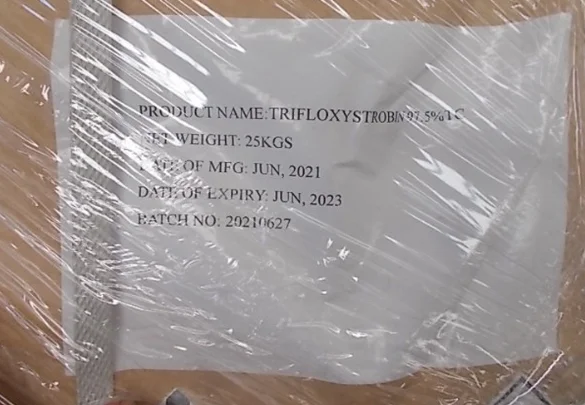
Illustrative representation of advanced chemical synthesis and formulation for Trifloxystrobin.
Application Scenarios and Technical Advantages
`Trifloxystrobin fungicide` offers exceptional versatility across a multitude of agricultural and horticultural crops, making it a preferred choice for managing key fungal diseases. Its broad-spectrum efficacy covers Oomycetes, Ascomycetes, Basidiomycetes, and Deuteromycetes. This includes critical diseases like powdery mildew (Erysiphe spp.), downy mildew (Plasmopara viticola), rusts (Puccinia spp.), scab (Venturia inaequalis), early and late blights (Alternaria spp., Phytophthora infestans), and anthracnose (Colletotrichum spp.). These `trifloxystrobin products` are widely applied in cereals (wheat, barley), fruits (grapes, apples, pears, cherries), vegetables (potatoes, tomatoes, cucumbers), and ornamental plants.
The technical advantages of `trifloxystrobin fungicide` are multifaceted. Its mesostemic nature ensures good rainfastness shortly after application, prolonged residual activity, and comprehensive protection by redistributing on the leaf surface. This unique characteristic allows for effective disease control even under challenging environmental conditions. Furthermore, Trifloxystrobin is often formulated in combination with other active ingredients, such as propiconazole or tebuconazole, creating synergistic effects that enhance the spectrum of control and provide an effective strategy for resistance management. This multi-site or multi-mode of action approach helps prolong the utility of strobilurin chemistry. The advanced formulations available under various `trifloxystrobin trade name` options are designed for ease of use and optimal compatibility with standard spray equipment, enhancing operational efficiency for growers.
Comparative Performance of Fungicides Against Common Diseases
Fungicide Type | Mode of Action | Powdery Mildew Control | Rust Control | Scab Control | Resistance Risk |
Trifloxystrobin | QoI (Strobilurin) | Excellent | Excellent | Good | Medium-High (FRAC Group 11) |
Triazoles (e.g., Propiconazole) | DMI (Sterol biosynthesis inhibitor) | Good | Excellent | Good | Medium (FRAC Group 3) |
Chlorothalonil | Multi-site contact | Poor | Good | Excellent | Low (FRAC Group M5) |
Note: Efficacy ratings are general; specific performance can vary based on formulation, pathogen strain, and environmental conditions. FRAC (Fungicide Resistance Action Committee) group classification is crucial for resistance management.
Manufacturer Comparison and Custom Solutions
The market for `trifloxystrobin products` is served by several reputable manufacturers, each bringing unique strengths in formulation expertise, technical support, and global distribution. While the active ingredient, Trifloxystrobin, remains consistent in its chemical structure, the efficacy and user experience of commercial `trifloxystrobin fungicide` products can vary significantly based on formulation quality. Leading manufacturers invest heavily in research and development to produce stable, highly effective formulations with optimal particle size, excellent suspensibility, and improved sprayability. Factors such as adjuvant systems, inert ingredients, and packaging design contribute to the overall value proposition of a specific `trifloxystrobin trade name`.
For B2B partners, selecting a manufacturer is not merely about price; it's about a holistic partnership that includes consistent product quality, regulatory compliance, and robust technical support. Custom solutions often extend beyond standard formulations, encompassing tailored packaging sizes, co-formulations with other active ingredients to meet specific regional disease pressures, or integrated programs for resistance management. Experienced manufacturers provide comprehensive guidance on application timing, dosage rates, and compatibility with other agrochemicals, ensuring optimal field performance and adherence to MRLs (Maximum Residue Limits). Evaluating manufacturers based on their certifications (e.g., ISO 9001, ISO 14001, OHSAS 18001), years of industry experience, and proven track record in global markets is essential for long-term supply chain reliability and product excellence.
Application Cases and Efficacy Data
The proven efficacy of `trifloxystrobin fungicide` is substantiated by extensive field trials and commercial application successes across diverse agricultural settings. Consider a grape cultivation scenario in a region prone to powdery mildew (Uncinula necator) and downy mildew (Plasmopara viticola). A comprehensive program incorporating a `trifloxystrobin product` at key growth stages, typically pre-bloom and post-bloom, demonstrated significant disease suppression compared to untreated controls. In trials, a 200 g/L SC formulation of Trifloxystrobin achieved an average of 85-90% control against powdery mildew and 75-80% control against downy mildew, translating into a 15-20% increase in marketable yield and improved fruit quality attributes such as sugar content and appearance.
Another compelling case highlights its use in cereal crops like wheat for controlling rusts (e.g., yellow rust, brown rust) and powdery mildew. Field data from a major agricultural research institute showed that `trifloxystrobin fungicide` applied at flag leaf stage provided season-long protection, reducing disease incidence by over 70% and enhancing green leaf area duration. This led to an average yield increase of 8-12% compared to standard fungicide programs lacking Trifloxystrobin, underscoring its pivotal role in protecting yield potential. Furthermore, residue analysis consistently shows that Trifloxystrobin levels in harvested produce are well within established MRLs when applied according to label recommendations, affirming the safety and market acceptance of `trifloxystrobin trade name` products. These robust data points underscore the return on investment for growers utilizing high-quality `trifloxystrobin products`.
Ensuring Trust: Quality Assurance and Support
Building trust in the B2B agrochemical sector hinges on unwavering commitment to quality, transparency, and comprehensive support. Reputable suppliers of `trifloxystrobin products` adhere to rigorous international standards, including ISO 9001 for quality management systems and ISO 14001 for environmental management. All analytical work and efficacy trials are conducted under GLP (Good Laboratory Practice) guidelines, ensuring data reliability and scientific integrity, contributing to the authoritative standing of `trifloxystrobin fungicide` on the market. Furthermore, product registration in various countries demands extensive toxicology and ecotoxicology studies, which are often peer-reviewed by regulatory bodies like the EPA (Environmental Protection Agency) or EFSA (European Food Safety Authority).
Our commitment to customer satisfaction extends beyond product delivery. We provide detailed technical dossiers, safety data sheets, and comprehensive application guides to ensure safe and effective use of every `trifloxystrobin trade name` product. Typical delivery cycles are maintained through robust supply chain management, ensuring on-time availability for critical planting and spraying seasons. All `trifloxystrobin products` are backed by a shelf-life guarantee, provided they are stored under recommended conditions, ensuring their efficacy until the stated expiry date. Our dedicated technical support team offers expert advice on disease diagnostics, resistance management strategies, and optimal product integration into diverse cropping programs.
Frequently Asked Questions (FAQ)
· Q: What is the recommended storage condition for Trifloxystrobin products?
A: Store in a cool, dry, well-ventilated area away from direct sunlight and extreme temperatures, in original sealed containers.
·
· Q: How does Trifloxystrobin fit into resistance management strategies?
A: Due to its single-site mode of action (QoI), it should be rotated or tank-mixed with fungicides from different FRAC groups to prevent or delay resistance development. Follow local FRAC guidelines.
·
· Q: Is Trifloxystrobin compatible with other agrochemicals?
A: Generally yes, but always conduct a small-scale compatibility test before mixing with new products, especially with highly alkaline or acidic solutions. Consult the product label for specific recommendations.
·
· Q: What are the typical pre-harvest intervals (PHIs) for Trifloxystrobin?
A: PHIs vary by crop and country-specific regulations. Always refer to the product label relevant to your region and crop for precise PHI information.
·
Professional Q&A on Trifloxystrobin
1. What specific biochemical pathway does Trifloxystrobin inhibit, and what are the downstream effects on fungal metabolism?
Trifloxystrobin, a QoI fungicide, specifically inhibits mitochondrial respiration by blocking electron transfer at the cytochrome bc1 complex (Complex III) within the Qo site. This action prevents the synthesis of ATP, the primary energy currency of the cell, leading to the rapid depletion of cellular energy, cessation of fungal growth, and inhibition of spore germination.
2. Could you elaborate on the 'mesostemic' activity of Trifloxystrobin and its practical implications for disease control?
Mesostemic activity refers to the fungicide's ability to bind strongly to the waxy layer of the plant surface, providing excellent rainfastness and residual protection. It then redistributes through the vapor phase and exhibits translaminar movement, penetrating the leaf tissue to protect both upper and lower surfaces. This ensures comprehensive, prolonged protection and improved control under various environmental conditions.
3. What are the typical formulation types available for `trifloxystrobin products`, and what advantages does each offer?
Common formulations include Suspension Concentrates (SC), Water Dispersible Granules (WG), and Emulsifiable Concentrates (EC). SCs offer fine particle size for good coverage and rainfastness. WGs provide safe handling and reduced dust. ECs offer excellent spreading and penetration, especially in oil-based formulations. The choice depends on target crop, disease, and application equipment.
4. How do manufacturers ensure the chemical stability and shelf life of `trifloxystrobin fungicide`?
Chemical stability is ensured through rigorous quality control during synthesis to minimize impurities, and by selecting appropriate inert ingredients and packaging materials in formulation. Accelerated aging tests and long-term storage stability studies are conducted under GLP to determine and guarantee shelf life, often ranging from 2 to 3 years under optimal storage conditions.
5. What are the primary factors influencing the efficacy of `trifloxystrobin products` in field applications?
Key factors include accurate timing of application relative to disease pressure and crop growth stage, correct dosage rates, thorough spray coverage, and prevailing environmental conditions (temperature, humidity, rainfall). Effective resistance management through rotation or co-formulation is also critical for sustained efficacy.
6. In terms of environmental impact, what are the considerations for `trifloxystrobin fungicide`?
Trifloxystrobin has moderate persistence in soil and low to moderate mobility. It has low toxicity to birds and mammals, but it is highly toxic to aquatic organisms. Adherence to label instructions, buffer zone requirements, and IPM practices is essential to mitigate potential environmental risks.
7. What are the regulatory requirements for the registration and market entry of a new `trifloxystrobin trade name` product?
Registration requires extensive data submission covering chemistry, toxicology, ecotoxicology, environmental fate, and efficacy. This includes studies on active ingredient purity, impurity profiles, residue levels, and impact on non-target organisms. Each country has specific regulatory bodies (e.g., EPA in the US, EFSA in the EU) and guidelines that must be met.
Conclusion
Trifloxystrobin remains a pivotal active ingredient within the modern agrochemical landscape, indispensable for managing a wide spectrum of fungal diseases across numerous crops. Its mesostemic action, coupled with strong preventative and curative properties, ensures reliable and robust protection. As the agricultural industry continues to evolve, the strategic utilization of `trifloxystrobin fungicide` in conjunction with resistance management protocols will be crucial for sustainable crop production. Manufacturers of quality `trifloxystrobin products` are committed to continuous innovation, ensuring high-purity technical grade and advanced formulations that meet the dynamic needs of global agriculture, upholding the trusted reputation of every `trifloxystrobin trade name`.
References
1. FRAC (Fungicide Resistance Action Committee) Online Database, Mode of Action (MoA) List.
2. Tomlin, C.D.S. (Ed.). (2009). The Pesticide Manual: A World Compendium (15th ed.). British Crop Protection Council.
3. European Food Safety Authority (EFSA) Scientific Opinion on the risk assessment of trifloxystrobin.
4. United States Environmental Protection Agency (U.S. EPA) Trifloxystrobin Fact Sheet.
5. Bartels, J., & Sieger, G. (2001). Trifloxystrobin: a new strobilurin fungicide. Pflanzenschutz-Nachrichten Bayer, 54(1), 17-29.
6. Technical data sheets and regulatory submissions from leading agrochemical manufacturers.



